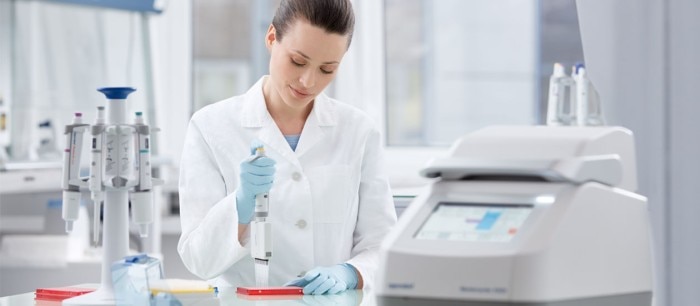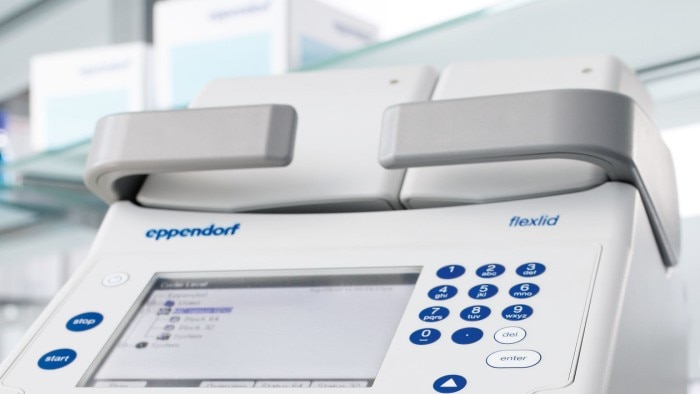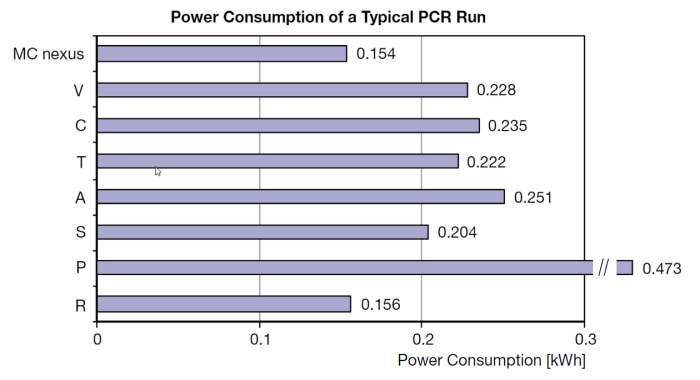MENU
IN | INR
-
-
-
-
- Advanced Therapies Week (ATW) 2025
- SLAS Europe 2025
- Bioprocessing Summit Europe 2025
- Medlab Middle East 2025
- SLAS International 2025
- Biologics World Nordics 2025
- ASIA LABEX: The Lab Show 2025
- BioProcess International Europe 2025
- ISEV 2025
- Forum Labo 2025
- Future Labs Live 2025
- Cell 2025
- ASIA LABEX: The Lab Show 2025
- Stem Cell Community Day 2025
- Analytica Lab India 2025
- JASIS 2025
- GSCN 2025
-
-
-
-
- Advanced Therapies Week (ATW) 2025
- SLAS Europe 2025
- Bioprocessing Summit Europe 2025
- Medlab Middle East 2025
- SLAS International 2025
- Biologics World Nordics 2025
- ASIA LABEX: The Lab Show 2025
- BioProcess International Europe 2025
- ISEV 2025
- Forum Labo 2025
- Future Labs Live 2025
- Cell 2025
- ASIA LABEX: The Lab Show 2025
- Stem Cell Community Day 2025
- Analytica Lab India 2025
- JASIS 2025
- GSCN 2025
IN | INR
-
- All Centrifuges
- Benchtop Centrifuges
- Floor-Standing Centrifuges
- Refrigerated Centrifuges
- Microcentrifuges
- Multipurpose Centrifuges
- High-Speed Centrifuges
- Ultracentrifuges
- Concentrator
- IVD Products
- High-Speed and Ultracentrifuge Consumables
- Centrifuge Tubes
- Centrifuge Plates
- Device Management Software
- Sample and Information Management
-
- All Pipettes, Dispensers & Automated Liquid Handlers
- Mechanical Pipettes
- Electronic Pipettes
- Multi-Channel Pipettes
- Positive Displacement Pipettes & Dispensers
- Pipette Tips
- Bottle-Top Dispensers
- Pipette Controllers
- Dispenser & Pipette Accessories
- Automated Pipetting
- Automation Consumables
- Automation Accessories
- Liquid Handler & Pipette Services
Sorry, we couldn't find anything on our website containing your search term.

Do You Feel Well Near Your PCR Cycler?
Lab Academy
- Molecular Biology
- Sustainability
- Amplification & PCR
- Ergonomics
- PCR Cyclers
- Essay
Technical specifications, performance, pricing – there are many hard facts for PCR cyclers which are obvious. On the other side, there are softer aspects like ergonomics and sustainability as different decision points on a PCR instrument…
Ergonomics
One of the rare manual steps during the lifetime of a PCR instrument is inserting and removing the samples. For this process, you need to open and close the lid. Whereas in the past, closing the main lid and closing the inner heated lid by a jog wheel were quite some tedious steps, now, most PCR instruments have integrated one-step-closing mechanisms that are much less work.Since the lid handle is the central point of contact, this part should be designed in an ergonomic style: Stable function combined with a design which fits well to the human fingers.
The second point of manual interaction with the instrument is the block, specifically when handling the tubes, strips, or plates. Any interaction with the vessels should be easy and access to the vessels should be comfortable. The potentially hot heated inner lid should be secured so that people do not touch it by mistake.
The third important point of contact is the user interface. The interface can be based on a classic screen combined with tabs or a touchscreen. The screen should have a sufficient size and convenient viewing angle for easy reading. Programming and set-up should be intuitive to avoid constant reading of the operating manual. The best way is to ask for a demo unit before purchasing, or visit a trade show or exhibition to check the interface and related programming of the desired PCR instrument.
Read more
Read less

Noise
The increasing number of instruments makes life in the laboratory stressful. In addition to the monotonous and tiring manual steps needed to use them, instruments also generate noise and waste heat. Although heat can be reduced in an air-conditioned laboratory, increasing noise is a significant stress factor [1].According to the recommendation of ISO 11690-1:1996(E) the noise emission and/or noise exposure should not exceed the following maximum values [2]:
- In industrial workplaces: < 80 dB(A), (e.g. vacuum cleaner, noise at a busy street)
- For routine office work: < 55 dB(A), (e.g. normal conversation)
- For meeting rooms or tasks involving concentration: < 45 dB(A) (e.g. dishwashers, whispering)
One of the main sources of noise are the fans used in a PCR cycler to remove the heat from the Peltier elements. A second aspect is the air flow within the instrument, caused by the fans. The more the airflow is re-directed and strikes sharp edges or solid surfaces, the higher the caused noise level.
In general, you can differentiate between 3 states of the PCR cycler: idling, PCR run, and constant cooling at 4 °C.
The goal is a limit of 45 dB(A) whereas even 55 dB(A) can be a challenge for many PCR cyclers.
In the human sound perception, an increase in the sound power level by 10 dB(A) means a doubling of the loudness [3,4]. Thus, you perceive the maximal detected sound power level difference of e.g. 20 dB(A) as a 4-fold higher loudness on cycler 1 in comparison to cycler 2.
Power Consumption - Sustainability
Apart from noise pollution, the use of more laboratory instruments leads to higher power consumption in the laboratory. Often the instruments are continually in use, or they are kept in standby mode over long periods of time. Therefore, power consumption of laboratory instruments is subject to increasing scrutiny:- Environmental protection – conservation of resources using energy efficient instruments,
- Rising cost of energy,
- Increased demands on the electro-technical infrastructure in the laboratory.
In contrast to ULT freezers or heating ovens, a PCR instrument consumes a limited amount of power. Still, the differences between different PCR instruments can be enormous. Like ramp rate comparisons, a good way to compare power consumptions is to run the same PCR on different instruments and measure the power consumption.
1) Performance of a typical PCR program:
When analyzing in total 8 different PCR instruments, the following conditions with the same protocol (to reflect the use of the instruments during routine applications) where used.
95°C for 2 min
95°C for 15 s (Cycle)
60°C for 15 s (Cycle 30x)
72°C for 30 s (Cycle)
72°C for 60 s
10°C for 10 min
The power consumption varied between 150 W and 470 W per run. All measurements were performed using an inserted 96-well PCR plate. The plate positions of columns 1, 3, 5, 8, 10, 12 were filled with 30 μL H2O each, which filled 48 of the 96 well positions.
Read more
Read less

2) Continuous temperature control of the block at 4 °C
Often the block is kept at 4 °C for several minutes, hours or even over night to cool the samples before further processing.
We tested the power consumption under the following conditions:
Lid temperature control turned off
Duration of measurement: 5 min
The power consumption at 4 °C varied between 30 W and more than 700 W per hour.
Tips for energy saving are simple – keep the power consumption in mind when selecting a new PCR instrument, switch-off the unit after usage, and avoid over-night-idling at 4°C where and whenever possible.
[1] World Health Organization. Additional laboratory hazards – Noise. In: Laboratory biosafety manual. 3rd ed. Geneva: WHO Library Cataloguing-in-Publication Data; 2004; 111.
[2] ISO 11690-1:1996. Acoustics - Recommended practice for the design of low-noise workplaces containing machinery - Part 1: Noise control strategies.
[3] Moore BCJ. Cochlear hearing loss: physiological, psychological and technical issues. 2nd ed. John Wiley & Sons Ltd.; 2007.
[4] Stevens SS. On the psychophysical law. Psychological Review 1957; 64 (3): 153–181.
Often the block is kept at 4 °C for several minutes, hours or even over night to cool the samples before further processing.
We tested the power consumption under the following conditions:
Lid temperature control turned off
Duration of measurement: 5 min
The power consumption at 4 °C varied between 30 W and more than 700 W per hour.
Tips for energy saving are simple – keep the power consumption in mind when selecting a new PCR instrument, switch-off the unit after usage, and avoid over-night-idling at 4°C where and whenever possible.
[1] World Health Organization. Additional laboratory hazards – Noise. In: Laboratory biosafety manual. 3rd ed. Geneva: WHO Library Cataloguing-in-Publication Data; 2004; 111.
[2] ISO 11690-1:1996. Acoustics - Recommended practice for the design of low-noise workplaces containing machinery - Part 1: Noise control strategies.
[3] Moore BCJ. Cochlear hearing loss: physiological, psychological and technical issues. 2nd ed. John Wiley & Sons Ltd.; 2007.
[4] Stevens SS. On the psychophysical law. Psychological Review 1957; 64 (3): 153–181.
Read more
Read less

